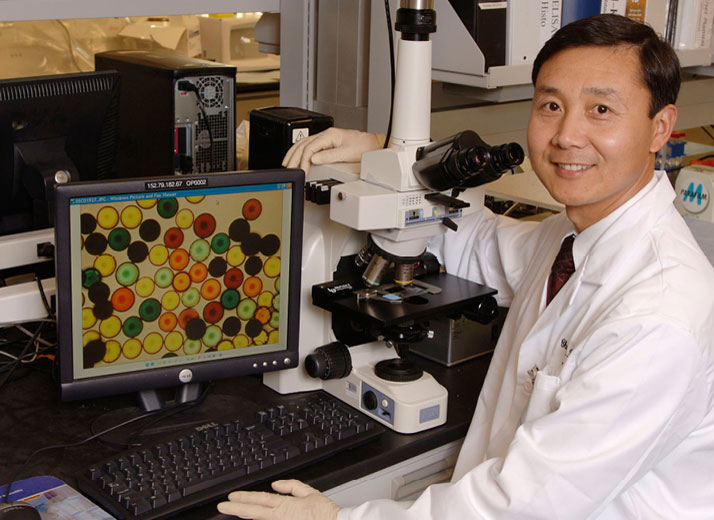
The history of cancer is filled with promising therapies that ultimately provided only marginal benefits. Early chemotherapy, high-dose chemotherapy and radical surgery are just a few examples.
Now we’ve developed a new generation of therapies that target specific mutations in tumors, undermining the genetic anomalies that drive the cancer. This approach makes perfect sense — remove the foundation and the building collapses. However, while preclinical trials were promising, the results in patients have been underwhelming.
“For most cancers, once you have failed first-line therapy, there is no standard, second line of treatment,” says Ralph de Vere White, a urologist and director of the UC Davis Comprehensive Cancer Center. “We have the patient get a biopsy and send it off for genomic analysis, which will show us abnormalities that can be treated. Let’s say there are four of them. Now we have to guess which one is driving the cancer, and the success rate is about 12 percent. That’s putting the patient through a lot for just 12 percent.”
It’s become obvious that simply matching tumor mutations with treatments isn’t enough. Researchers and clinicians have been missing a step, but de Vere White and genitourinary oncologist Chong-Xian Pan may have found it. The answer may be testing different therapies against a patient’s unique cancer to find the right therapies to eradicate it.
Pinpointing the right mutations
The problem with basing cancer therapies on genomic diagnostics is the tests don’t provide enough information. Yes, they identify mutations, but they cannot tell which mutations are driving the cancer.
“Look at how many mutations a cancer can have — from only a few in pediatric cancers to dozens or hundreds in adult cancers,” says Pan. “Lung cancer probably has hundreds of mutations, and only a few of those are important. But at this point we can’t always figure out which mutations are important and which are unimportant.”
Oncologists must make their best guess based on the data they have. However, if that particular course of treatment proves ineffective, there’s little time to backtrack and try a different therapy. Clinicians need precise information that will help them make the right choice from the beginning.
We may be on the verge of doing just that. In a recent proof-of-concept paper, Pan, de Vere White and colleagues reported that they may have found a way to pinpoint the critical mutations that drive an individual’s cancer.
Working closely with The Jackson Laboratory, with headquarters in Bar Harbor, Maine and a facility in West Sacramento, the team grafted invasive bladder cancers from human patients in mice. Once the tumors grew, they analyzed their molecular characteristics then tested different cancer treatments and combinations of treatments to see which were effective. When a therapy worked in the model, it was given to the patient.
“By prescreening, we can determine which medication works, providing a much higher chance the patient will benefit,” says Pan. “This can reduce toxicity, increase efficiency and lower costs.”
Though the study was small — only nine patients — the results were impressive. First, the grafts showed remarkable genetic fidelity to the original patient tumors — between 92 and 97 percent — even after several months. This is an enormous improvement over cell lines in a dish, which deviate from the mother tumor in just a few days.
But most importantly, the grafts provided amazing insights into which drugs could help patients.
“In one case, cisplatin didn’t work and gemcitabine barely worked, but the combination really knocked the tumor out in the mouse,” says de Vere White. “And that’s exactly what happened in the patient.”
Expanding the model
This study provides a promising pathway for researchers and clinicians and could ultimately help a lot of patients. Another team of UC Davis researchers is using similar methods to see if they can improve treatment targeting for lung cancer.
But this is not the end game. Although using patient tumor grafts in mice has proven effective in selecting cancer therapies against invasive bladder cancer, the process is somewhat cumbersome, as it can take months for a graft to fully implant.
The ultimate goal is to use computers to help select effective treatments. The UC Davis team wants to develop a comprehensive algorithm that includes the patient’s genome, the tumor’s genome, which therapies worked in mice and which ones worked with patients.
“We’re not saying the mouse model is the answer,” says de Vere White, “but presently there is a high failure rate in developing new, successful therapies, and we’re trying to figure out how we can do better. In time, we’d like to be able to biopsy the patient, sequence the tumor, feed that information into the computer and have the computer tell us which therapy will work.”
